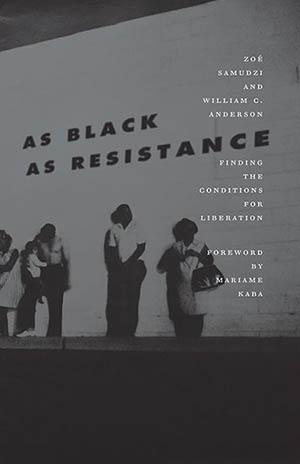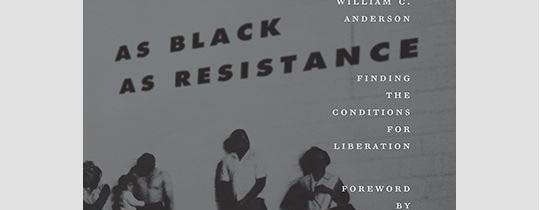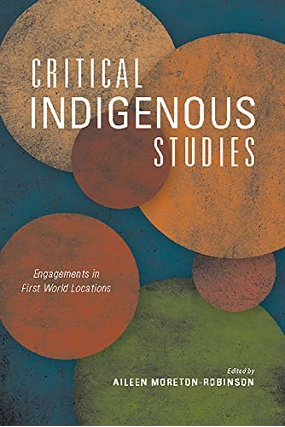

Meetings in the Margins of Remembrance: Centering Afro-Indigenous Standpoints, Histories, and Reparative Futurities
- John Pierre (JP) Craig, Diane Hill, and Natacha Ndabahagamye Jones
- Fri, 10/28/2022 - 10:15
At our September Afro-Diasporas Futures in Education Collective gathering, Dr. Zoé Samudzi and Dr. Aileen Moreton-Robinson engaged us in critically thinking about entanglements between historical discourses of Blackness and Indigeneity, the logics of race, land possession, law, and sovereignty.
Each of their work illuminates how the past is indexed in Afro-Indigenous presents, and most importantly helps us develop newly imagined Afro-Indigenous futures.

Thinking from Samudzi’s work on the early twentieth century genocide of Ovaherero and Nama peoples committed by the German state in what is now Namibia, Dr. Samudzi stated:
“The African continent is often precluded when talking about Indigeneity, in general.”
Exclusionary registers of memory/history that control, flatten, dilute and/or erase Black Indigenous identities and colonial memory occlude liberation and land-based justice.
In the case of Namibia, Indigenous African life was impeded by the genocidal logics of settler colonialism and the ways the colonial German empire viewed Indigenous African peoples as fungible for labor…and eventually disposable for the occupation of their land and resources.
Samudzi exposed how the law worked to preserve this colonial amnesia by determining what would be considered a legal versus historical fact.
German postcolonial memory has for long maintained silences around the campaign of ethnic extermination and collective punishment waged against the Herero and the Nama in colonial German Southwest Africa. Thus, Zoé Samudzi asks us to consider:
Whose registers of memory are accounted for in historical narratives? Who are the historical actors? Who has agency?
Dr. Samudzi also complicates idealistic notions of the post-colonial African state as a pinnacle of independence and liberation. Ongoing settler colonial logics are still shaping negotiations over restitution for genocide between the post-colonial Namibian and German states- both deeply entangled in the logics of domination and serving as an extension of coloniality.
Indigenous liberation has yet to be achieved within its borders as precarity for the Ovaherero and Nama communities, now a demographic-minority, persists while land remains in possession of German ancestors.
Imagining new futures calls for multidirectional memory, a decolonial lens with restitution and repatriation of land, wealth and belongings to the Ovaherero and Nama peoples… now.
Samudzi issued a powerful reminder with these concluding words:
“The nation state has never been and cannot be a vehicle for Indigenous liberation.”
In the second part of our gathering, Dr. Aileen Moreton-Robinson shared her contribution to theorizing Blackness and the relationship between Blackness and Indigeneity. She called attention to the Middle Passage epistemology at the center of discourses of Blackness. This in turn centers the African diaspora, separates Blackness from Indigeneity, and ties the emergence of Blackness and race to colonialism.

Moreton-Robinson pointed to ancient Christian writings containing negative associations of Blackness, used as a biomarker of Egyptians, Ethiopians and other Black people. This and other centuries-long discourses in science and literature vilified and flattened Blackness, constructing and generalizing it as inferior, lacking, less than human, demonic, and deviant. These dehumanizing constructions laid the foundation for 16th-century racial epistemologies.
Dr. Moreton-Robinson focuses our attention on Australia as an example of how whiteness has functioned as a regime of truth across time and space, demonstrating how colonial British and Australian settler governments imposed anti-Black and anti-Indigenous discourses on Aboriginal and Torres Strait Islander people. Similar to Samudzi’s work, Moreton-Robinson’s exposed the role of the law in this regime of truth. It enshrined these discourses of Blackness to justify racial hierarchies and the colonization of Aboriginal and Torres Strait Islander lands. This legal racecraft laws that worked to exclude Aboriginal and Torres Strait Islander peoples and every other non-Aboriginal non-white community from membership in the white nation by their proximity to Blackness.
As collaborators on this blog post, we met to reflect on what Dr. Samudzi and Dr. Morten-Robinson shared. We shared sentiments around the following:
Specificity of place and time, as demonstrated in each talk, intervened in attempts to flatten and separate Blackness from Indigeneity. It was refreshing to witness the ways specificity articulates compelling moves and nuanced insights without generalizing experiences.
State recognition and reconciliation is not a theory of change that will improve Indigenous life (Coulthard, 2014).
White ways of constructing Blackness and Indigeneity have served to erase, flatten, and dehumanize us. These cannot be the center of our imaginings of Afro-Indigenous futures. We have to work from different locations, from Black and Indigenous places of knowing ourselves.
Colonial amnesia persits! Remembrance refuses this willful ignorance. Remembrance empowers us to envision the decolonial futures that do not yet exist for Afro-Indigenous communities globally.
Lastly, our solidarity with Dr. Samudzi in her refusal to mourn the death of the Queen of England. Her voice, and the many others who spoke, wrote, and tweeted their refusals, call our attention back to systems of coloniality.
May our collective refusals continue generating possibilities for liberated Afro-Indigenous futurities.